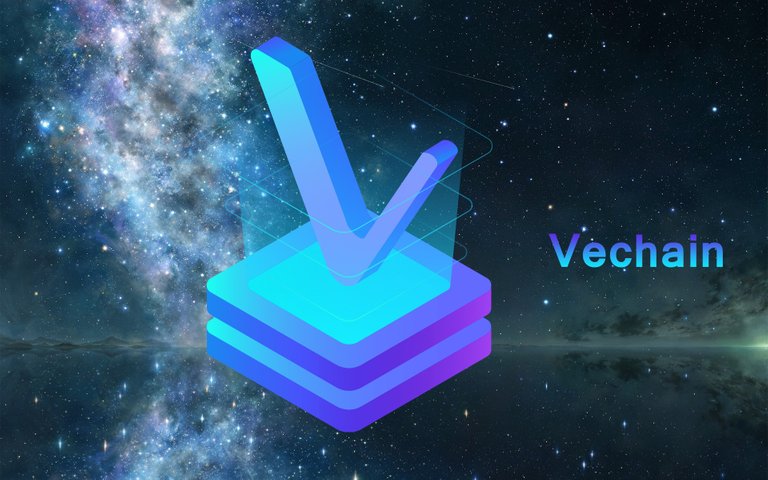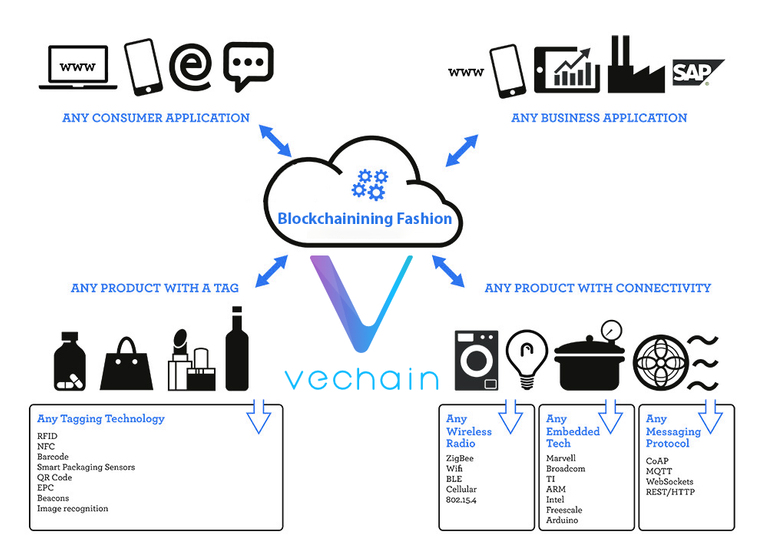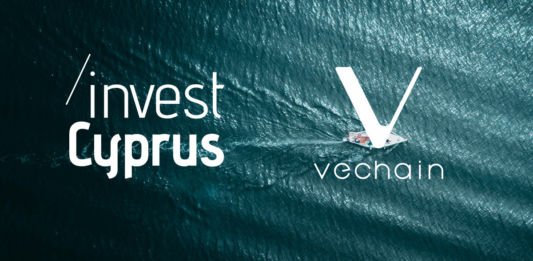
The average person may never have heard of VeChain or Vet. VeChain may be under the radar, but it's been around for quite some time since its inception in 2015. That doesn't mean VeChain is a small or irrelevant coin. Out of half a million different cryptocurrencies on the market, VeChain currently ranks 14th in market capitalization, just below Solana and above Theta and Stellar. What is Vechain? Today we want to discover together.
At the end of March 2021, a container ship named MV Ever Given got stuck in the Suez Canal. These circumstances would not have been a huge problem without the fact that these waterways are responsible for about 12 of all world trade. The six-day lockdown cost the global economy nearly $ 60 billion and showed the world just how fragile the existing supply chain system is. This condition is an issue that can be addressed through the cryptocurrency supply chain.
The cryptocurrency that should solve this problem and is a market leader is none other than VeChain. So what is VeChain? VeChain was founded in 2015 by an electrical engineer named Sunny Lu. He is a former CIO of Louis Vuitton China and has nearly 20 years of experience in supply chain infrastructure. VeChain is a blockchain platform for improving supply chain management and business processes. The aim is to optimize the flow of information and complex processes in the supply chain using blockchain. VeChain is based on Ethereum, but like many other corporate blockchains, it has been optimized for performance.
VeChain is quite a revolutionary project that gives the user control over the authenticity of the delivered products from the moment the products are made until the moment they are in the hands of the consumer. Items are traded between many parties and our current system requires trust between these parties to ensure that the product is genuine and that there is no misappropriation or damage in the chain process. Producers and consumers have suffered billions in annual losses due to embezzlement or vandalism. VeChain could solve all of this.

How does VeChain work? VeChain's specialty is supply chain management. It combines blockchain with NFC, RFID and QR code technology to track luxury goods, groceries, drugs, etc. This requires a lot of fabric throughput, which is why VeChain uses a proof-of-stake consensus algorithm called Proof of Authority (POA) which can process up to 10,000 transactions per second. The Vechain blockchain has a maximum of 101 authorization nodes, and these are the only nodes in the network that can process transactions. All evidence from authority nodes must include KYC documentation and at least 25 million vocational training participants Whether or not a candidate for node authority is chosen is ultimately up to the Vechain agency who selects all the nodes of authority.
VeChain also supports smart contracts, so decentralized applications and even new tokens can be created on the blockchain. The addition of new dapps or tokens to the blockchain is determined by the veterinary owner and the VeChain institution.

So what is a Vtho token? The Vtho token is used to pay gas fees for all transactions on the VeChain blockchain. These costs are generally delegated to a third party. With the approval of veterinary owners, the VeChain institution periodically adjusts Vtho tokens to ensure that transaction fees on its US dollar network remain stable.
The VeChain ICO took place in August 2017 and generated around $ 20 million. The VeChain Thor blockchain was launched in June 2018. The vet has appreciated a dozen times in value since the start of this year, despite a boom in trade volume helping its parabolic movement. I cannot distinguish a single factor that causes price movements in the vet other than its governance and operational structure. These price movements can encourage more economic centers to join the network. Indeed, the participation of veterinarians can be a solid source of passive income.
If you use the 15 million Vet needed to operate the node, You will have passive income of about $ 100 per day. 15 million Vet equals almost $ 2.5 million, which is a lot of money, and considering that the value of vets has also grown over time. You can have residual income as long as they have coins that increase in value.
This creates a cycle in which economic nodes buy tens of millions of vets, raising the price of vets, causing more economic nodes to continually join. The good news is that the vet has a firm offer, $ 86.7 billion, and all of the vets assigned to private investors and their teams are already privately owned. Meanwhile, Vtho has more than quintupled since the start of this year, as Vtho is used as gas on the Vechain blockchain. If the price of Vtho increases, it means that the institution's staff are indeed using Vechain. Either that or a whale will buy all of Vtho. Although Vtho's market cap is much lower than Veto's, it may be more difficult to improve the rankings after the recent surge as Vtho has no max supply and constant selling pressure is created by creating nodes that Vtho receives as a reward for participating and then selling it for profit.

VeChain has made significant progress in terms of development and has forged several productive partnerships since last summer. In August of last year, Vechain announced the launch of a power-centric supply chain solution for Vechain ToolChain. Blockchain as a service platform allows food businesses to use Dapps to track their products and products using models tailored to their industry. VeChain has also partnered with Travala to enable payment for vacations with Vet. In September, VeChain joined the China Alliance for Food Safety and Animal Health, which includes the Chinese chapter, McDonald's, Starbucks and also Walmart. Then, in November, it was revealed that senior officials in China's Hubei Province had met with a VeChain team and a risk management company to discuss tracking and tracing related to the pandemic. The December sequel from international management consulting giant Grand Thornton has positioned itself as one of 101 computing nodes. The Director of Grand Thornton announced that Grand Thornton is keen to help its customers take advantage of VeChain's blockchain technology.
Meanwhile, in January 2021, Cypriot hospitals started keeping vaccination records through an application powered by the VeChain blockchain. Last week, Sales Force Director Daniel Nortje tested the VeChain toolchain and rated it as his preferred blockchain solution because of its simplicity.
What's next with VeChain when Vechain doesn't have a clearly defined roadmap? However, a recent interview with VeChain founder Sunny Lu revealed a few things about what is in the works. VeChain wants to diversify its applications beyond the supply chain and start experimenting with specific crypto approaches such as NFT and DEFI. VeChain not only wants to invest money in the NFT frenzy, but also for NFTs to be more active in their field of supply chain solutions.
VeChain also expects its blockchain to be able to process at least one million transactions per day by the end of this year. The VeChain Institute is also working on the final stages of the Proof of Authority 2.0 update, which is expected to go live in the coming weeks. With POA 2.0, the VeChain blockchain can increases the security of the network which usually keeps gamers away from the company.
Regardless of what the Vet and Vtho price movements look like, VeChain has struggled behind the scenes. According to founder Sunny Lu, VeChain has been hit hard by the pandemic. While some might think the supply chain disruption caused by the pandemic will push companies to look to other solutions like VeChain. In reality, however, the opposite is true. Instead of dealing with new technologies, companies around the world are trying to be more conservative in their business.
Big brands like Walmart are opting for existing supply chain solutions, such as those offered by IBM through the cryptocurrency blockchain. Travel restrictions made it difficult for the VeChain team to display and demonstrate their products and show the toolchain to potential customers. Although VeChain has a strong presence in China, it appears to be having issues with its adoption, and cryptocurrencies are subject to strict regulations in China, making it difficult for companies to learn about cryptocurrencies.
In addition, VeChain has the difficult task of balancing the wants and needs of veterinary owners, institutional clients and the Chinese government. This condition is not easy. To enter the supply chain industry, there is strong competition from IBM, strict control from the Chinese government and other blockchain cryptocurrencies from companies like Hadera Hashgraph that are in the management market. of the EE supply chain. They have gained popularity in the western world. Although VeChain is considered by some to be a superior project, there are still concerns among those who are starting to take their chances and focus on crypto areas that VeChain was not designed for. Reaching out to the world of NFT and DEFI is great, but VeChain's entry into this market has confused people and signs that they are increasingly desperate to be adopted.
VeChain has captured the hearts of people and institutions to realize their dream of a fully transparent economy. Some people always wonder what exactly is in the food they eat or the clothes they wear. VeChain asked them to do it. Do you think VeChain is a good investment, considering all of the plans and concerns I mentioned above? Let me know what you think of VeChain in the comments section of this article.
Posted Using LeoFinance Beta